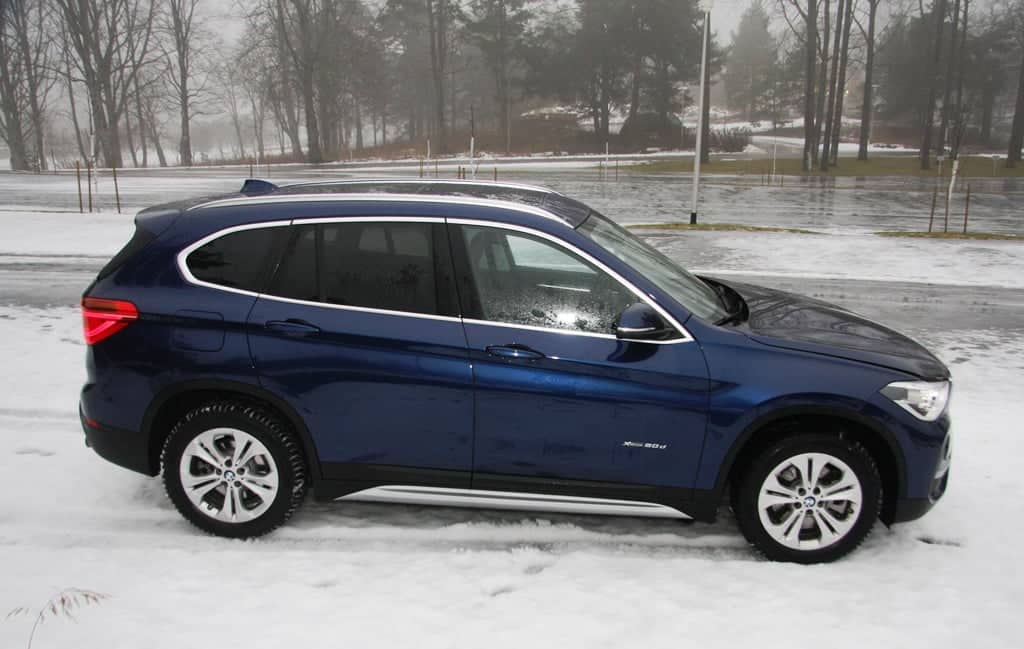Text and photos by Timo Eskeli
We put BMW’s little SUV to the test. It’s the second-generation X1, which was almost completely redesigned about a year ago. The current BMW X1 looks very similar to the BMW X3.
The latest BMW X1 is based on a front-wheel-drive design. The solution is the same as that used in the 2-series Active Tourer.
Previously, the X1 had a longitudinal engine, typical of BMW. Now the engine is transverse, which means the introduction of new four-wheel drive technology. The solution also allows for more interior space.
The car is available with both front-wheel drive and all-wheel drive. In BMW-speak, sDrive stands for front-wheel drive and xDrive for all-wheel drive.
The car is clearly smaller than the X3, with a reduction of around 21 cm in length and 6 cm in width. Although the car is now taller than its predecessor, it is 10 cm lower than the X3.
From a distance, the cars look very similar and it takes a good sense of proportion to tell one from the other.
Practical interiors
The dashboard is slim and contains a minimal number of functions. The large multimedia screen is clearly visible from the centre of the dashboard. The wide range of functions on the dashboard allows you to adjust the car’s economy and performance, among other things. All the convenience features such as radio, navigation and trip computer are also connected.
The interior lighting is fascinating. Coloured light tubes provide a comfortable ambience in the dark. There are also lights on the locks outside the doors, making it easier to open the doors after dark.
Our test car also has a panoramic skylight, which brings a nice light into the cabin.
The optional seats, which cost around a thousand euros, are sturdy. The lateral support for the backrest in particular is exemplary.
The boot is relatively narrow. There is reasonable depth and height, although it is not a space-saver.
In standard configuration, the boot is 505 litres, 85 litres larger than its predecessor. The rear seats can be moved longitudinally to increase the space a little more.
As in almost all other jeans and SUVs, the X1’s seats swivel in two parts to provide a comfortable increase in carrying capacity when needed. The seats can be conveniently swivelled from the boot using small electric switches. The space is 1500 litres at best.
Pleasant to drive
The car is pleasant to drive. With its two-litre diesel engine (190 hp) and eight-speed automatic transmission, it’s a pleasure to drive. I was able to test drive the car in a variety of conditions. The four-wheel-drive system worked well on rough and icy roads. The car remained very stable in some places, even in the worst of the ruts where ice and tarmac alternated.
The car is otherwise very quiet, but the noise from the studded tyres is very noticeable. Unfortunately, we did not have the opportunity to test the car on summer tyres, which would have given us a better overall impression of the noise.
In the previous generation X1 we complained about the tightness of the rear seat. The increased height of the car has remedied this shortcoming. The rear seat now seats comfortably.
Engines to suit all abilities
The BMW X1 has a wide range of engines. BMW currently offers three petrol engine options (136 – 231 hp) with emissions between 119 and 149 g.
Similarly, there are four diesel engine options (116 to 231 hp) with emissions ranging from 109 to 133 g.
For these reasons, I would buy a BMW X1
- Successful appearance “X3 look”
- Drivability
- Good BMW aftermarket value
These are the reasons why I would not buy the X1
- Standard equipment is rather limited
- Tyre noise?
- Price including equipment (test drive 71 150 €)













